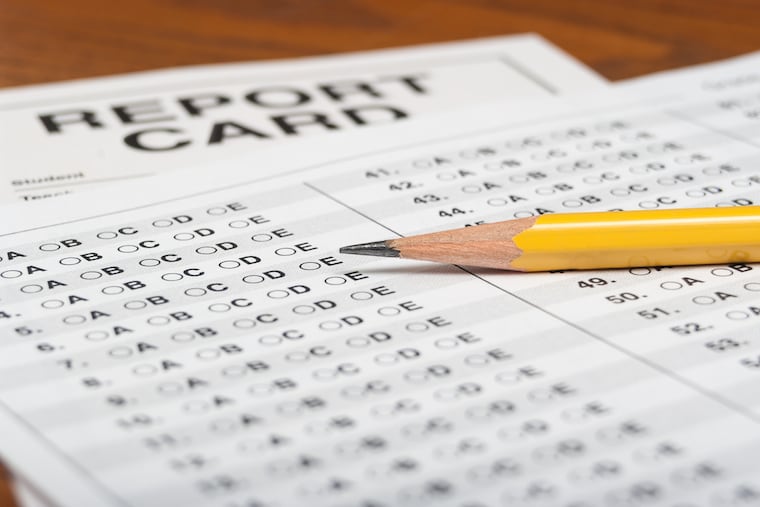Pennsylvania and New Jersey reading scores decline on ‘nation’s report card’
The declines roughly tracked national trends, though both states registered a steeper-than-average drop in eighth-grade reading scores.

Pennsylvania and New Jersey students held steady in math but showed declines in reading, with eighth graders in both states notching steeper-than-average drops in those scores, according to the latest national education benchmark.
Philadelphia students also registered greater declines than their peers in other large cities in eighth-grade reading on the National Assessment of Educational Progress (NAEP) test. Known as the “nation’s report card,” the test is administered every two years by the National Center for Education Statistics. The 2019 results, from nearly 600,000 exams given to students between January and March, were released Wednesday.
Both states rank relatively well nationally, New Jersey in particular. And some experts caution against reading too much into two-year changes.
The drop in both states was large enough that it’s “unlikely it occurred by chance,” said Kristen Blagg, research associate for the Center on Education and Data Policy at the Urban Institute, a Washington-based think tank. Yet “it’s hard to understand what might have caused this.” Blagg said student demographics, in addition to policy, play a role in testing results.
The declines roughly tracked sliding national scores over the last two years. More than half of all states saw decreases in eighth-grade reading scores, while about a third saw declines in fourth-grade reading. Two out of three students nationally didn’t meet reading proficiency standards — results that U.S. Secretary of Education Betsy DeVos termed “devastating." And the outcomes also reflect a trend: Over the last decade, the gap between the highest- and lowest-achieving students has widened.
How the states stack up
Pennsylvania’s fourth and eighth graders scored above the national average in math. In reading, fourth graders fared better than their peers nationwide, though eighth graders scored near the national average.
In New Jersey, fourth and eighth graders scored above the national average in reading and math, even as reading scores at both grade levels declined.
New Jersey was one of 17 states to see decreases in fourth-grade reading scores. Both states’ scores fell on the eighth-grade reading test, which uses literary and informational texts to measure students’ reading comprehension.
In Pennsylvania, about 35% of the state’s eighth graders were deemed to be proficient in reading, down from nearly 40% two years earlier. New Jersey eighth graders recorded a similar decline: Close to 43% were proficient, a decline from nearly 47%.
School officials emphasized the overall results rather than the two-year reading declines. Nicole Reigelman, spokesperson for the Pennsylvania Department of Education, noted that students in the commonwealth continued to outperform those in other states. But she said “subgroup results still point to an achievement gap between some student groups."
In one such gap, eighth-grade Pennsylvania students from families in which neither parent had completed high school lost 17 points on the reading test — a far greater decline than the state’s overall five-point drop.
Philadelphia School District spokesperson Imahni Moise said the district’s scores had held steady in other areas, and noted that declines in eighth-grade reading were seen in 10 other large cities as well as most states.
» READ MORE: Philly schools’ test scores mostly rising, but just 36% of children meet state English standards
Mike Yaple, spokesperson for the New Jersey Department of Education, said the state’s public schools "consistently rank among the strongest in the nation, and thanks to the work of our educators, we are among the top handful of states again this year.”
Calls for policy changes
Nationally, DeVos said, the results signaled a “student achievement crisis." She reiterated her calls for expanding school-choice initiatives, while Democrats called for greater school funding.
Morgan Polikoff, an associate professor of education at the University of Southern California who studies K-12 education and assessment policy, said stagnation in NAEP results over the last decade suggests policy changes are needed.
“There’s no question the big gains we had during the 2000s are not there anymore,” Polikoff said. While he said the Great Recession likely contributed to sluggish test scores, “it’s reaching a point where it’s hard to say the reform agendas we’ve been pushing for the last decade" will lead to improvement.
While experts differ on proposed solutions, “a lot of people are dissatisfied" with the national scores, Polikoff said.